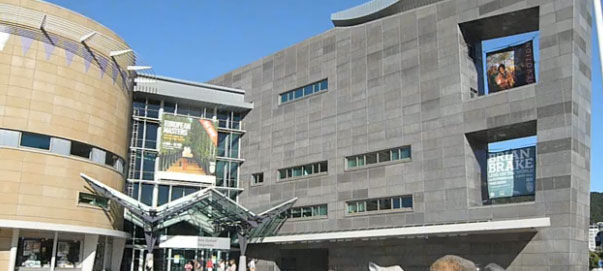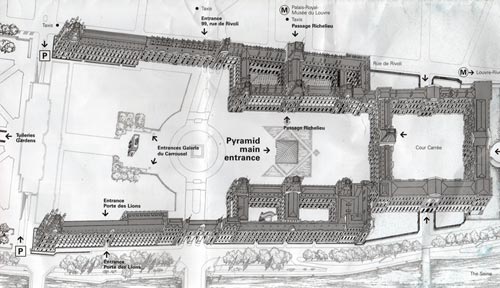Florence, or as the Italians call it “Firenze”, was like something out of a vivid dream where you were taken into the past, yet it still exists today with it’s epic churches, ornate palaces, an ancient fortress and striking, historic homes that blend one or more of these elements, oftentimes adding a modern twist. The days were unseasonably hot for October and because of that the evenings were just barely comfortable. Staying near the train station made for easy access to everything and all of the amenities but the humidity forced us to take shelter between noon and 6 p.m. The early evenings cooled down the air just enough to allow us to begin our explorations of the city center and try the local cuisine.
Everything is picturesque and it’s not too difficult to imagine what things must have been like centuries ago in this bustling, artistic city centre. We began our trek through Florence, as soon as the temperature would abide, by wandering up and around to the other side of the river to a local eatery for an ultra-creamy gelato, (the kind only Italy is best known for), and a crisp, tasty proscuitto panini, consumed in just that order. After a quick cappuccino on ice, we followed the river up to the next bridge and in towards the Duomo.
The Duomo itself causes you to just stop and take a deep breath while absorbing the complexity of it all. The tile work is intricate and mesmerizing. Inside you’ll find perhaps the most beautiful tile work seen anywhere in Europe, maybe the most beautiful on Earth. Nearly in shock, we wandered inside and around the plaza looking for treasures in the surrounding marketplace and little shops. Finally, hunger once again got the best of us and we began to look for places to have dinner. The aromas wafting out of the pizzerias was irresistible and we unconsciously set our minds to having one. It did not disappoint. Some friends had warned us that there wasn’t any good food in Italy. We were a bit worried because we are picky eaters but we let our noses do the choosing in Florence and didn’t have a bit of trouble, especially when we went a little out of the way and off the beaten track.
Also, we still can’t figure out why people don’t like traveling with children. All throughout Europe, but especially in Italy and France, the owners, waiters, waitresses and other patrons made an extra effort to interact with us and it made what might have been just another trip to Europe a magical experience for us all. Our little one year old was always happy and kept herself busy entertaining the owners and staff, and vice versa, so we used that time to relax and enjoy our first of many flavorful pizzas in Italy.
The Italian people are so loving towards children that we sometimes couldn’t hardly get a block down the street without someone wanting to hug or kiss our little girl. It really took some getting used to, but we’re learning to trust. Certainly perfect strangers wanting to pick up, hold, and take your child around the restaurant, bar or hotel isn’t commonplace in the US or Canada, but it is here and when in Rome… or rather, Florence, do as the Florencians do! It also afforded us both a moment to eat… together! We always kept a watchful eye on her, of course, but somehow it made us feel a renewed sense of caring in people, which, these days is refreshing to say the least.
The next day began with a quick grocery trip and transitioned into seeking refuge in artsy studio apartment we rented for the remainder of the hellacious heat of the day, until the evening’s reprieve. On our way to dinner we did a bit of last minute clothes shopping, and found prices in line or just slightly above those found in US, depending on what you were looking for, and then embarked on our twilight trek towards the Fort. It’s tall tower is a Florence landmark and can be seen throughout the city. Underneath it sits the famous, stunning statues of Neptune and David.
Being so lifelike, had they begun to move one would have just thought it was another talented street performer who somehow made themselves a bit larger than life. Someone had mentioned that they are replicas, due to their popularity there is a fear of vandalism, but certainly some of the other statues in the area are the genuine articles.
The Neptune and David statues are in a busy, open courtyard where people gather in large numbers to listen to the nightly entertainment, which, of all things, is comprised mostly of American music! We began to wonder when the rumored impromptu opera was going to begin, but, alas it did not. Perhaps the heat kept the tenors away? However, there was a high end karaoke machine, accompanied at times by live musicians, which allowed for an extensive repertoire of the Beatles, and a plethora of American bands, to be performed. They won out the night and the crowd. There are certainly other types of art and music events held at this plaza on a regular basis, but the evenings we were there it was rock and roll all the way with talented vocalists from all over the globe.
On the edge of the plaza is an Italian restaurant, frequented by locals and expats which is always a good sign when choosing a place to chow, where we had a wonderful spaghetti pasta with meat sauce that was identical to Mom’s recipe! There was no difference what so ever. Everyone always enjoyed Mom’s pasta sauce. She makes it for us, OK, me… religiously when we go back to Canada to visit.
Our last full day in Florence consisted of wandering about checking out the statues in the daylight, heading across the river on the ancient, two level bridge for another wonderful meal while listening to string instruments being played in the street. It was a hot, beautiful time in Florence. We will definitely hit the museums next time and plan to get reservations months, if not years, earlier as we missed seeing the original David and some others… but we had to have a reason to come back, and what a great reason it is!
The Duomo, originally designed by Arnolfo di Cambio, is an amazing work of art inside and out. The inside of the dome is a beautiful mosaic with 44 wonderful stain glass windows.
The Duomo is one of the centerpieces of Florence. Below the Duomo is the evolved remains of many versions of former churches.
The Duomo in Florence, Italy is a beautiful structure made from Green and Pink marble panels bordered by white. The building was started at the end of the 12th century and continued for many years. The dome is a landmark and is recognized throughout the world as a symbol of Florence.
The Arno River that cuts through the center of Florence is beautiful and was the source of water for the city. This day we are seeing pickup soccer happening on a pitch right at the water’s edge. The two story bridge with the shops underneath is known the world over and is located just downstream.
We checked out of our place on Tuesday morning and took another high speed train down to Rome. Our flight left that evening for Sicily. We wanted very much to check out some of the sites but the distances were too great in that hot weather. We instead decided on having a beer and gelato then doing some more treasure hunting.
We hopped onto another train to take us the 30 min drive into the airport. We made the trip in plenty of time to wander around the airport a bit. We particularly thought the wine bar was a good idea for all airports.
Our plane took off without a hitch and we were in Catania in just over an hour.



